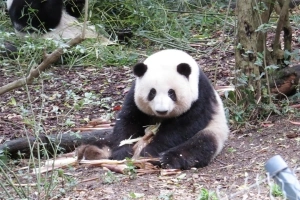Chengdu
Top 5 Attractions
Natural Scenery
Historical Sites
Modern Attractions
Museums
Chengdu Travel Destination Guide
FAQ
What are the most "Chengdu-style" activities to experience at Heming Tea House in People’s Park?
You can sip jasmine tea from a covered bowl while watching locals play mahjong, get a professional ear-cleaning (a unique street service), or join a group for "shuǐ qiāng bàng" (water calligraphy) on the ground with large brushes.
How to plan a food-focused tour for culinary enthusiasts in Chengdu?
Breakfast: Spicy dandan noodles at a local stall. Morning: Visit a spice market to learn about Sichuan peppercorns. Lunch: Hotpot with bamboo shoots and duck intestines. Afternoon: Snack tour (stinky tofu, sugar oil fruit). Dinner: Creative Sichuan cuisine at a fusion restaurant.
Why are Chengdu people obsessed with spiciness, and what are their ways to cool down the heat?
Spicy food helps combat Chengdu’s humid climate (it makes you sweat, expelling dampness). Locals cool down with "bīng fěn" (ice jelly with syrup), "guǒ kuī" (savory pancake), or a sip of local beer—often served ice-cold.
What tips help foreign visitors use Chengdu’s metro system?
Download the "Chengdu Metro" app (English available) to check routes. Buy a "Tianfu Tong" card (rechargeable, sold at stations) for easy access—no need to buy single tickets. Avoid peak hours (7:30-9:00 AM, 5:30-7:00 PM) as trains get crowded.
Where to stay in Chengdu for the best "slow life" vibe?
Stay in a boutique hotel in Kuanzhai Alley (old courtyard converted into rooms) or near People’s Park—you can start mornings with tea and end evenings with a stroll through lantern-lit lanes.














